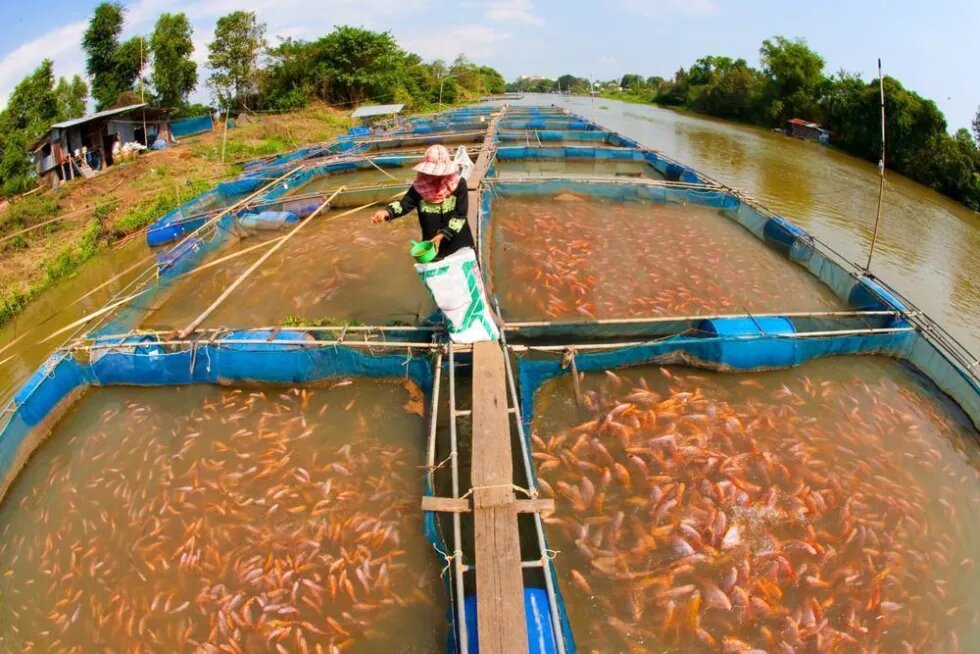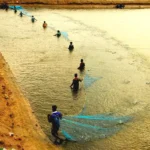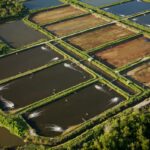Aquaculture: A Sustainable Solution to Global Seafood Demand
Aquaculture: A Sustainable Solution to Global Seafood Demand
As the global population continues to grow, the demand for protein-rich foods, particularly seafood, is expected to rise significantly in the coming decades. Traditional fishing practices can no longer meet this demand without depleting wild fish stocks, leading many to look toward aquaculture as a viable, sustainable solution to feeding the world. But what exactly is aquaculture, and how does it contribute to ensuring a sustainable future for seafood production?
Understanding Aquaculture
Aquaculture refers to the cultivation of aquatic organisms in controlled environments, including fish, shellfish, and aquatic plants. Unlike wild fisheries, which rely on natural ecosystems, aquaculture is a form of farming that takes place in freshwater or marine environments. It includes activities like fish farming, shellfish farming, and the cultivation of seaweed and algae.
With over half of the seafood consumed globally coming from aquaculture, the industry has grown rapidly over the past few decades. From small, family-owned farms to large-scale commercial operations, aquaculture is becoming an increasingly important part of the global food system.
The Role of Aquaculture in Sustainable Seafood Production
As the demand for seafood continues to rise, aquaculture offers a sustainable way to meet this need without placing undue pressure on wild fish populations. Wild fisheries are facing challenges such as overfishing, illegal fishing, and environmental degradation. Aquaculture, when practiced responsibly, can alleviate some of these pressures by producing seafood in a controlled, efficient manner.
Moreover, aquaculture plays an important role in food security, particularly in coastal and developing regions where fishing and fish farming provide livelihoods for millions of people. By cultivating fish and other aquatic species, aquaculture also contributes to the local economy and provides affordable protein sources for communities around the world.
Sustainability Challenges in Aquaculture
While aquaculture has the potential to provide a more sustainable source of seafood, it also faces several challenges that need to be addressed to ensure long-term sustainability:
-
Water Quality and Pollution
Poor water quality can have serious consequences for farmed fish and the surrounding environment. Nutrient pollution from excess feed and waste, as well as chemicals used in farming, can negatively impact water bodies, leading to problems like algal blooms and the depletion of oxygen. The development of recirculating aquaculture systems (RAS) is a promising solution, as it allows for water to be filtered and reused, reducing environmental impact. -
Disease Management
Disease outbreaks in aquaculture can spread rapidly and cause significant losses. The use of antibiotics and chemicals to control diseases raises concerns about antibiotic resistance and the potential impact on human health. However, advances in disease-resistant fish breeding and better monitoring systems are helping mitigate these risks. -
Feed Sustainability
A significant portion of aquaculture’s environmental footprint comes from fish feed, which often includes wild-caught fish. This raises concerns about overfishing and the depletion of marine ecosystems. Researchers are working on developing alternative, sustainable feed options, such as plant-based feeds, algae, and insect protein, which would reduce the reliance on wild fish stocks. -
Escapes and Invasive Species
Farmed fish occasionally escape into the wild, where they may compete with native species or spread diseases. Better containment systems, such as land-based fish farms or closed containment pens, help prevent escapes and reduce the risks to local ecosystems.
Innovative Solutions for a Sustainable Future
The aquaculture industry has made significant strides in recent years to address these sustainability challenges. Some key innovations include:
-
Integrated Multi-Trophic Aquaculture (IMTA)
IMTA is an innovative approach that combines different species of plants and animals in the same farming system. For example, seaweed and shellfish can be farmed alongside fish to create a balanced, sustainable ecosystem. This system reduces waste, improves water quality, and provides additional sources of income for farmers. -
Closed-Loop Systems
Closed-loop aquaculture systems, such as RAS, are gaining popularity because they recycle water, reduce waste, and minimize environmental impact. These systems allow for fish farming to take place with minimal dependence on natural water bodies, making them suitable for land-based farming. -
Alternative Feeds
Researchers are working on alternative feeds made from plant-based ingredients, algae, and insects. These feeds not only reduce the pressure on wild fisheries but also provide a more sustainable way to meet the nutritional needs of farmed fish. -
Biotechnology and Genetics
Advances in biotechnology, such as genetic modification and selective breeding, are improving disease resistance in farmed species and helping to reduce the need for antibiotics. Genetically improved fish also grow faster, which increases efficiency and reduces resource use.
The Future of Aquaculture
As global seafood demand continues to grow, aquaculture will play a pivotal role in meeting these needs sustainably. However, the industry must continue to evolve, adopting best practices and embracing innovation to minimize environmental impact and maximize food production.
The future of aquaculture is promising, with the potential to provide a steady, sustainable supply of seafood for generations to come. By focusing on technological innovation, sustainable practices, and responsible management, the aquaculture industry can continue to be an essential part of the global food system.
Final Thoughts
Aquaculture offers a solution to many of the challenges facing traditional fishing industries. By implementing sustainable farming practices and innovative technologies, the aquaculture industry can provide the world with a reliable, eco-friendly source of seafood while safeguarding marine ecosystems. As we look ahead, it is crucial that we support and encourage the development of sustainable aquaculture to ensure that we can continue to enjoy healthy seafood for years to come.







